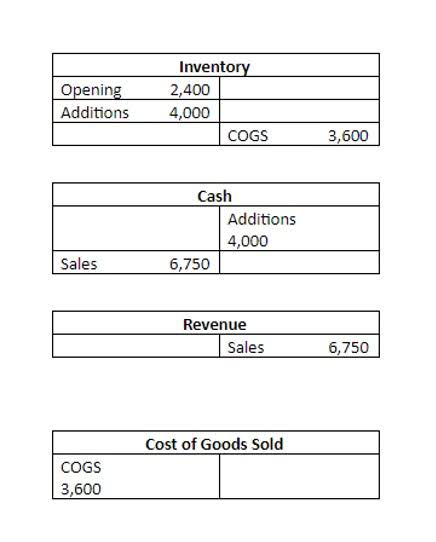Notes Receivable in Accounting

Below is the schedule for the interest and amortization calculations using the effective interest method. As shown above, the note’s market rate (12%) is higher than the stated rate (10%), so the note is issued at a discount. Below are some examples with journal entries involving various stated rates compared to market rates. All financial assets are to be measured initially at their fair value which is calculated as the present value amount of future cash receipts. The $18,675 paid by Price to Cooper is called the maturity value of the note. Maturity value is the amount that the company (maker) must pay on a note on its maturity date; typically, it includes principal and accrued interest, if any.
Notes Receivable in Accounting

For example, a note dated 15 July with a maturity date of 15 September has a duration of 62 days, as shown below. Notes receivable are written commitments made by individuals or businesses to pay a specific amount of money at a predetermined date or upon request. Instead, a new note receivable has been created, with a maturity date set for six months from now. The maker of the note receivable, along with a principal amount, must also pay interest on it. The principal amount of the note receivable represents its face value or the value that the payee will receive. The payee holds the note and is, therefore, due to receive a payment from the payer.

What are the important components of notes receivables?
A note’s maturity date is the date at which the principal and interest become due and payable. For example, when the previously mentioned customer requested the $2,000 loan on January 1, 2018, terms of repayment included a maturity date of 24 months. This means that the loan will mature in two years, and the principal and interest are due at that time. The following journal entries occur at the note’s established start date. The principal of a note is the initial loan amount, not including interest, requested by the customer. The date on which the security agreement is initially established is the issue date.
- Upon approval, the $7,000 is deposited into the business’s checking account the next day and then Square charges 9% of the business’s credit card sales each day until the $7,910 is fully paid.
- Unlike other loans, note receivables do not usually come with prepayment penalties.
- We need the frequency of a year because the interest rate is an annual rate and we may not want interest for an entire year but just for the time period of the note.
- There are several elements of promissory notes that are important to a full understanding of accounting for these notes.
- A case in point is the sale of equipment or other personal or real property in which payment terms are normally longer than is customary for an open account.
Trial Balance
However, the accounting entry will follow if the company converts an accounts receivable balance to a note receivable. Possibility 1 – The customer finally pays on 4/30, two months after the original due date. The company charges a 10% penalty on the outstanding balance, which is $17 (1,020 x 10% x 60/360). Now let’s look at what happens when the customer in Situation 2a above finally pays the company back after the period. Additional interest revenue earned on this second notes is $1,020 x 10% x 60/360, or $17. Receivables are a fundamental component of businesses’ accounting operations, and understanding their different types is paramount to ensuring efficient cash flow management.
- Cash payments can be interest-only with the principal portion payable at the end or a mix of interest and principal throughout the term of the note.
- Notes receivable are classified as an asset account on a company’s balance sheet.
- For example, trade notes receivable result from written obligations by a firm’s customers.
- No interest receivable account is used when the note carries compound interest, because in that case the carrying amount of notes receivable is increased by debiting it, as seen above.
- Notes receivable are initially recognized at the fair value on the date that the note is legally executed (usually upon signing).
How to Analyze Accounting Transactions, Part One

The total discount $480 amortized in the schedule is equal to the difference between the face value of the note of $10,000 and the present value of the note principal and interest of $9,250. The amortized discount is added to the note’s carrying value each year, thereby increasing its carrying amount until it reaches its maturity value of $10,000. As a result, the carrying amount at the end of each period is always equal to the present value of the note’s remaining cash flows discounted at the 12% market rate. This is consistent with the accounting standards for the subsequent measurement of long-term notes receivable at amortized cost.
Create a Free Account and Ask Any Financial Question
The payer, or the marker, is the borrower who gets the loan from the payee. Situation 2b – The company receives another note from the customer for the principal and receives cash for the interest only. On the maturity date, both the Note Receivable and Interest Revenue accounts are credited. Note Receivable is credited because it is no longer valid and its balance must be set back to zero. Interest Revenue is credited because it is now earned, regardless of whether the company receives the cash. In the following example, a company received a 60-day, 12% note for $1,000 from a customer on account on January 1.
A Note Payable is recorded when a company is on the “paying” side of a debt. The difference in recording is based on which side of the transaction a company is on. For example, assume that the Bullock Company has received a 3-month, 18% note for $5,000 dated 1 November 2019 in exchange for cash. The firm’s year-end is 31 December, and the note will mature on 31 January 2020. When the payment on a note is received, Cash is debited, Note Receivables is credited, and Interest Revenue is credited. In any event, the Notes Receivable account is at the face, or principal, of the note.
- They give businesses the advantage of formalizing credit terms, mitigating the chances of a payment dispute.
- The cash flow is discounted to a lesser sum that eliminates the interest component—hence the term discounted cash flow.
- In this journal entry, the Accounts Receivable invoice for Dino-Kleen is reduced to take the invoice out of Accounts Receivable.
- The amount debited to notes receivable represent the interest earned in month of December on the carrying amount at the end of November because the note carries compound interest.
- If the note term does not exceed one accounting period, the entry showing note collection may not reflect interest receivable.
- These are the note’s principal, maturity date, duration, interest rate, and maturity value.
A lender will still pursue collection of the note but will not maintain a long-term receivable on its books. Instead, the lender will convert the notes receivable and interest due into an account receivable. Sometimes a company will is note receivable an asset classify and label the uncollected account as a Dishonored Note Receivable. Using our example, if the company was unable to collect the $2,000 from the customer at the 12-month maturity date, the following entry would occur.



